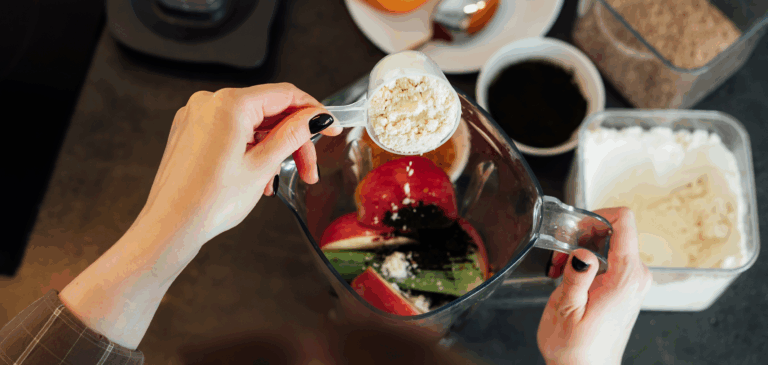Milk Thistle: The Original Liver Tonic
Summary
Milk thistle (Silybum marianum) has been used for centuries as a liver tonic and is one of the most well researched herbs in the treatment of liver disease. Milk thistle has three active phytonutrients: flavonoligans, silybin, silydianin and silychristin – collectively referred to as silymarin. These phytonutrients have been shown to act as antioxidants, and their antioxidant and free-radical scavenging activity increases after digestion.
The liver is a vital organ at the center of metabolism. It is our body’s own chemical processing plant, performing the essential tasks of removing harmful toxins, processing, storing and releasing critical nutrients, and breaking down and repackaging fats and proteins. These tasks are only some of the around-the-clock tasks for which the liver is responsible, which is why detoxification and liver support is at the core of most integrative medical interventions. When it comes to liver support, milk thistle should automatically come to any clinician’s mind as the original liver-toning herb.
Milk thistle (Silybum marianum) has been used for centuries as a liver tonic, and is one of the most well researched herbs in the treatment of liver disease. Considered a weed in some areas, milk thistle is native to the Mediterranean region, but is now found all over the world. The leaves release a milky white sap when crushed, which is presumably how the herb got its name.
Milk thistle has three active phytonutrients: flavonoligans, silybin, silydianin and silychristin – collectively referred to as silymarin.1 These phytonutrients have been shown to act as anti-oxidants; their anti-oxidant and free-radical scavenging activity increases after digestion. Milk thistle has also been shown to have anti-viral and inflammation dampening properties, and may offer protection to several organ systems. While milk thistle is most recognized for its liver supporting benefits, there are many other surprising potential health benefits of this classic herbal mainstay.
Detoxification, Digestion & Liver Support
Milk thistle is most commonly known for its use as a liver tonic. The phytonutrients in milk thistle protect the liver against injury from medications, alcohol, and environmental toxins, making it most relevant today for many of our patients. Silymarin protects the liver by supporting the health and integrity of liver cells (hepatocytes), and offers protection against tissue scarring, free radical damage, and the effects of circulating toxins. In fact, it is believed that milk thistle functions as a cellular shield, inhibiting toxins from binding to liver cell membrane receptors.1
Milk thistle supports not only the liver, but also the gallbladder, bile ducts, and bile flow, which in turn supports detoxification, digestion, and elimination. Impressively, silymarin increases liver cells’ normal rate of repair, improving its ability to regenerate. For this reason, milk thistle is often used in the treatment and prevention of fatty liver disease, chronic hepatitis C, and bile duct disorders. In fact, milk thistle is the most commonly used herb for liver support among people in American gastrointestinal clinics. In Germany, it is routinely used as a treatment for cirrhosis and toxic liver damage.2
Silymarin increases glutathione synthesis and upregulates cytochrome p450, which is the mechanism by which it detoxifies and protects the liver from the effects of prescription medication. Milk thistle may also protect the liver from more toxic exposures, like chemotherapy. Its use has been shown to decrease the liver-damaging side effects associated with certain types of chemotherapy, as well as reduce the overall number and severity of cancer treatment side effects.3
Inflammation
Silymarin is known to modulate inflammation, and recent research has found that these phytonutrients modulate the expression of key genes that regulate cellular inflammation in two distinct phases. The first phase is an acute increase in the expression of genes that are associated with cellular stress, followed by a longer-acting, sustained suppression of genes associated with inflammation. The first phase kicks off a controlled inflammatory response, including the activation of Activating Transcription Factor 4 (ATF-4) and adenosine monophosphate protein kinase (AMPK) creating cellular stress within the endoplasmic reticulum, which upregulates the cellular repair response. The second phase then dampens the inflammatory response by inhibiting the metabolic pathways and mediators that promote inflammation, including nuclear factor kappa B (NF-kB). Other botanicals have also been found to function in this two-phased process, including curcumin and epigallocatechin gallate (EGCG), in which a short-acting promotion of the inflammatory response results in a longer-term cellular repair response and overall reduced inflammatory response.4
Other Potential Benefits
- Kidney Health: Milk thistle has been proposed to protect renal function in a similar way to its liver protective actions. It may stimulate kidney cell regeneration, protect against diabetic retinopathy, reduce lipid peroxidation in renal tissue, and protect or ameliorate the effects of drug-induced kidney disease and renal damage. Considering that 60 percent of acute kidney injury can be attributed to drug-induced nephrotoxicity. Silymarin as a kidney protective herb presents a major opportunity for practitioners.5
- Diabetes: Silymarin supplementation has been found to improve several important glycemic markers after only four months of treatment. Supplementation with milk thistle has been found to decrease HbA1c, fasting blood sugar, total cholesterol, LDL cholesterol, triglycerides and liver function tests in people with diabetes.6
- Brain Health: Animal studies have suggested that milk thistle may offer neuroprotective benefits by inhibiting the formation of amyloid beta-proteins present in Alzheimer’s disease. Since silymarin has been shown to down regulate the inflammatory response, the herb may prove useful in the prevention of inflammatory brain diseases such as Alzheimer’s disease.7
Milk thistle is well established as an herb that supports liver health, yet this appears to be the tip of the iceberg when it comes to the various indications for this classic herb. The wide variety of potential health benefits for this well-known, and well-tolerated herb underscore the importance of keeping up with the evolving research when it comes to new uses for an old favorite.
- Abenavoli, L., Capasso, R., Milic, N., & Capasso, F. (2010). Milk thistle in liver diseases: past, present, future. Phytother Res, 24(10):1423-32. doi: 10.1002/ptr.3207.
- Siegel, A.B., & Stebbing, J. (2013). Milk thistle: early seeds of potential. Lancet Oncol, 14(10): 929–930. doi: 10.1016/S1470-2045(13)70414-5
- PDQ Integrative, Alternative, and Complementary Therapies Editorial Board. (2018). Milk thistle (PDQ®): Patient version. PDQ Cancer Information Summaries [Internet]. https://www.ncbi.nlm.nih.gov/books/NBK65841/?report=classic
- Lovelace, E.S., Wagoner, J., MacDonald, J., et al. (2015). Silymarin suppresses cellular inflammation by inducing reparative stress signaling. Journal of Natural Products, 78(8):1990-2000. (4)
- Dashti-Khavidaki, S., Shahbazi, F., Khalili, H., & Lessan-Pezeshki, M. (2012). Potential renoprotective effects of silymarin against nephrotoxic drugs: a review of literature. J Pharm Pharm Sci, 15(1):112-23.
- Huseini, H.F., Larijani, B., Heshmat, R., et al. (2006). The efficacy of Silybum marianum (L.) Gaertn. (silymarin) in the treatment of type II diabetes: a randomized, double-blind, placebo-controlled, clinical trial. Phytother Res, 20(12):1036-9.
- Murata, N., Murakami, K., Ozawa, Y., et al. (2010). Silymarin attenuated the amyloid β plaque burden and improved behavioral abnormalities in an Alzheimer’s disease mouse model. Biosci Biotechnol Biochem, 74(11):2299-306.







